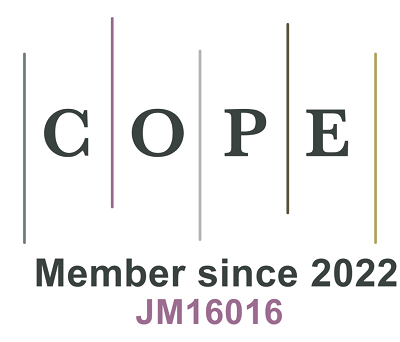MASLD or MAFLD: fatty liver by any name will pose the same challenge
Medical science has been struggling to understand fatty liver disease for centuries. In 1836, Addison was the first to describe this histological abnormality, and two years later, Rokitansly described its relationship to cirrhosis[1]. Within a few years, it became abundantly clear that diabetes and obesity, in addition to alcohol, can lead to the development of fatty liver. Furthermore, diabetic fatty liver may progress to cirrhosis. The term “non-alcoholic” was first used by the eminent pathologist Jurgen Ludwig in 1980 to describe steatohepatitis, a condition similar to that seen in alcoholic patients, among patients who denied any alcohol abuse[2]. The popular nomenclature of non-alcoholic fatty liver disease (NAFLD) is often credited to Shaffner and Thaler (1986)[3]. The spectrum of hepatic involvement in NAFLD ranges from non-alcoholic fatty liver (NAFL) to non-alcoholic steatohepatitis (NASH), cirrhosis, and the development of hepatocellular carcinoma (HCC). This nomenclature remained dominant for nearly four decades as the prevalence of NAFLD rapidly increased[4], driven by several socio-cultural factors. Today, it has become the most common indication for liver transplantation (LT) worldwide[5] and is also emerging as the leading cause of HCC in non-cirrhotic livers[6]. Despite ongoing efforts to understand its true pathogenesis[7] and find effective treatments, for reasons poorly understood by many, the nomenclature of this disease was changed twice within a span of 4 years, from NAFLD to metabolic (dysfunction)-associated fatty liver disease (MAFLD)[8] and later to metabolic dysfunction-associated steatotic liver disease (MASLD)[9].
The first change was announced in 2020, following a survey and Delphi process, where experts proposed the term MAFLD[10]. The primary aim of this change was to shift from a negative nomenclature of “non-alcoholic” to a more positive diagnosis[10]. The term MAFLD encompasses all patients with fatty liver who have at least two of the metabolic risk factors: waist circumference ≥ 102/88 in Caucasian men/women and
The need for this change in nomenclature is supported by the following reasons. The term “metabolic” reflects the pathophysiolsogic basis of the disease, focusing on a positive attribute rather than the exclusion of ethanol abuse. Therefore, the diagnosis can be made more quickly and simply, without the need to rule out other liver diseases. It is hoped that this change in nomenclature may generate renewed enthusiasm among healthcare personnel to identify these patients and promote a more holistic approach to managing the condition. Additionally, it helps identify patients with advanced fibrosis, enabling the stratification of those at high risk of mortality. Patients with dual etiologies of fatty liver (e.g., Hepatitis C and NAFLD), who were previously managed based on only one dominant cause, may receive a more comprehensive treatment approach. Finally, the potentially stigmatizing term “Alcohol” is avoided in MAFLD.
This nomenclature received wide acceptance[11,13,14,15] but was also criticized for several reasons. While it was widely believed that the pathogenesis of MAFLD was similar to that of metabolic syndrome, most of the drugs used to treat hypertension, diabetes, hyperlipidemia, and other related conditions proved ineffective in treating MAFLD. For example, statins, antihypertensive drugs, and many antidiabetic or lipid-lowing medications have not shown benefit for MAFLD patients. Additionally, the role of genetic factors, intestinal dysbiosis, and sarcopenia, which play a major role in the pathophysiology of MAFLD, was ignored due to the excess focus on metabolic components. MAFLD also failed to account for the additive/synergistic effects of viral hepatitis or ethanol abuse on the natural progression and prognosis of fatty liver disease. Furthermore, reports have highlighted a significant subset of patients with “lean NAFLD”, where metabolic syndrome may not be prominent[16]. Some authors spoke frankly against the name change, stating that it is not supported in their regions[17,18,19].
Amid ongoing debates, the second change in nomenclature was introduced by another Delphi consensus meeting[11]. Surprisingly, many of the experts who participated in the first Delphi consensus were also involved in the second. The rationale for this second name change was threefold. First, the term “Fatty” was now considered stigmatizing for patients. Second, experts wanted to expand the spectrum to include alcohol and other causes of fatty liver, recognizing that many patients may have multiple contributing factors. Finally, the change aimed to address the “Potential negative impact of changes in diagnostic criteria for the disease in terms of biomarker and therapeutic development”[20]. To reflect these considerations, a new term, Met-alcoholic liver disease (ALD), was introduced, which represents a middle point in the spectrum of illness, positioned between MASLD (Ethanol abuse of less than 30 g per day in males and less than 20 g per day in females) at on one end and ALD at the other end (Ethanol abuse of more than 60 g per day in males and 50 g per day in females)[11]. Additionally, patients with uncommon etiologies of fatty liver, such as drug-induced steatosis, HCV infection, and monogenic causes of steatosis (Secondary SLD), were included under the classification of specific etiology MASLD. Monogenic causes, in particular, must be actively considered in children when various inborn errors of metabolism commonly manifest as steatosis[21].
This latest nomenclature has also come under criticism, with experts quickly highlighting its limitations[20,22]. The Delphi consensus voting pattern showed that the term MASLD failed to reach the Delphi target of 67% (as it was the top choice of only 30% of experts) but was still accepted as a consensus. Some have suggested that the entire exercise may have been done to save billions of dollars already invested in biomarker and drug treatment research for NAFLD, as the earlier definition of MAFLD would have classified 20% of patients differently[23,24]. MASLD primarily focuses on liver fat, which may eventually be replaced by fibrosis as the disease progresses to cirrhosis. In such cases, patients without detectable fat in the liver may be mistakenly labeled as having cryptogenic cirrhosis. One major challenge in MASLD was the inclusion and stratification of alcohol intake, which largely relies on patient self-reported history. However, this approach is inherently unreliable, as patients may either misrepresent or underestimate their alcohol consumption[25]. Additionally, no effort was made to stratify the degree of metabolic dysfunction - an individual with only one cardiometabolic risk factor (CMRF) is considered equivalent to someone with five CMRFs.
This raises a fundamental question. How has this change in nomenclature improved our understanding or management of the condition? Whatever the name, patients will continue to progress from fatty liver to steatohepatitis, then to fibrosis, and ultimately to either cirrhosis or HCC. Is the new nomenclature truly evidence-based? A large number of papers have discussed the pros and cons of this change in recent years[10,26,27]. Now, efforts are being made to collect evidence to justify the revised terminology, and initial findings are yielding intriguing insights[28]. Perhaps the same level of enthusiasm should be directed toward addressing clinical questions that may directly impact patient outcomes.
DECLARATIONS
Authors’ contributions
Involved in the manuscript preparation and contributed equally: Anand AC, Praharaj D
Read and approved the manuscript: Anand AC, Praharaj D
Availability of data and materials
Not applicable.
Financial support and sponsorship
None.
Conflicts of interest
Both authors declared that there are no conflicts of interest.
Ethical approval and consent to participate
Not applicable.
Consent for publication
Not applicable.
Copyright
© The Author(s) 2025.
REFERENCES
1. Lonardo A, Leoni S, Alswat KA, Fouad Y. History of nonalcoholic fatty liver disease. Int J Mol Sci. 2020;21:5888.
2. Ludwig J, Viggiano TR, McGill DB, Oh BJ. Nonalcoholic steatohepatitis: Mayo Clinic experiences with a hitherto unnamed disease. Mayo Clin Proc. 1980;55:434-8.
4. Younossi ZM, Golabi P, Paik JM, Henry A, Van Dongen C, Henry L. The global epidemiology of nonalcoholic fatty liver disease (NAFLD) and nonalcoholic steatohepatitis (NASH): a systematic review. Hepatology. 2023;77:1335-47.
5. Battistella S, D’Arcangelo F, Grasso M, et al. Liver transplantation for non-alcoholic fatty liver disease: indications and post-transplant management. Clin Mol Hepatol. 2023;29:S286-301.
6. Daher D, Dahan KSE, Singal AG. Non-alcoholic fatty liver disease-related hepatocellular carcinoma. J Liver Cancer. 2023;23:127-42.
7. Grander C, Grabherr F, Tilg H. Non-alcoholic fatty liver disease: pathophysiological concepts and treatment options. Cardiovasc Res. 2023;119:1787-98.
8. Eslam M, Sanyal AJ, George J; International Consensus Panel. MAFLD: a consensus-driven proposed nomenclature for metabolic associated fatty liver disease. Gastroenterology. 2020;158:1999-2014.e1.
9. Rinella ME, Lazarus JV, Ratziu V, et al; NAFLD Nomenclature consensus group. A multisociety Delphi consensus statement on new fatty liver disease nomenclature. Hepatology. 2023;78:1966-86.
10. Lancet Gastroenterology Hepatology. Redefining non-alcoholic fatty liver disease: what’s in a name?. Lancet Gastroenterol Hepatol. 2020;5:419.
11. Premkumar M, Anand AC. Lean fatty liver disease: through thick and thin. J Clin Exp Hepatol. 2021;11:523-7.
12. Chen L. From metabolic dysfunction-associated fatty liver disease to metabolic dysfunction-associated steatotic liver disease: controversy and consensus. World J Hepatol. 2023;15:1253-7.
13. Fouad Y. Metabolic-associated fatty liver disease: new nomenclature and approach with hot debate. World J Hepatol. 2023;15:123-8.
14. Duseja A, De A, Mehta M, et al. Patients with metabolic-dysfunction associated fatty liver disease (MAFLD) without associated etiologies and non-MAFLD non-alcoholic fatty liver disease (NAFLD) have similar liver disease severity - data from Indian Consortium on NAFLD (ICON-D). J Clin Exp Hepatol. 2022;12:S73-4.
15. Gofton C, Upendran Y, Zheng MH, George J. MAFLD: how is it different from NAFLD?. Clin Mol Hepatol. 2023;29:S17-31.
16. Albhaisi S, Chowdhury A, Sanyal AJ. Non-alcoholic fatty liver disease in lean individuals. JHEP Rep. 2019;1:329-41.
17. Singh SP, Anirvan P, Reddy KR, et al. Non-alcoholic fatty liver disease: not time for an obituary just yet!. J Hepatol. 2021;74:972-4.
18. Duseja A, Taneja S. Changing nomenclature from nonalcoholic fatty liver disease to metabolic dysfunction-associated fatty liver disease - not only premature but also confusing. J Clin Exp Hepatol. 2021;11:278-9.
19. Singh SP, Anirvan P, Butt AS, et al. NAFLD vs MAFLD: South Asian NAFLD patients don’t favor name change. Euroasian J Hepatogastroenterol. 2022;12:S1-4.
20. Younossi ZM, Rinella ME, Sanyal AJ, et al. From NAFLD to MAFLD: implications of a premature change in terminology. Hepatology. 2021;73:1194-8.
21. Society for Paediatric Gastroenterology Hepatology (ESPGHAN) and European Association for the Study of the Liver (EASL), on behalf of co-authors. Electronic address: [email protected]; European Society for Paediatric Gastroenterology Hepatology (ESPGHAN) and European Association for the Study of the Liver (EASL), on behalf of co-authors. Diagnosis of fatty liver in children should occur in parallel to investigation for other causes of liver disease. Lancet Gastroenterol Hepatol. 2023;8:598-600.
22. Singh SP, Sudhamshu KC, Anirvan P, Shrestha A, Mahtab MA. Nonalcoholic fatty liver disease vs metabolic-associated fatty liver disease vs metabolic dysfunction-associated steatotic liver disease: what’s in the name?. Euroasian J Hepatogastroenterol. 2024;14:1-4.
23. García-Compeán D, Jiménez-Rodríguez AR. NAFLD vs MAFLD. The evidence-based debate has come. Time to change? Ann Hepatol. 2022;27:100765.
25. Schuckit MA, Clarke DF, Smith TL, Mendoza LA. Characteristics associated with denial of problem drinking among two generations of individuals with alcohol use disorders. Drug Alcohol Depend. 2020;217:108274.
26. Portincasa P. NAFLD, MAFLD, and beyond: one or several acronyms for better comprehension and patient care. Intern Emerg Med. 2023;18:993-1006.
27. Arab JP, Díaz LA, Rehm J, et al. Metabolic dysfunction and alcohol-related liver disease (MetALD): position statement by an expert panel on alcohol-related liver disease. J Hepatol. 2025;82:744-56.
Cite This Article
How to Cite
Download Citation
Export Citation File:
Type of Import
Tips on Downloading Citation
Citation Manager File Format
Type of Import
Direct Import: When the Direct Import option is selected (the default state), a dialogue box will give you the option to Save or Open the downloaded citation data. Choosing Open will either launch your citation manager or give you a choice of applications with which to use the metadata. The Save option saves the file locally for later use.
Indirect Import: When the Indirect Import option is selected, the metadata is displayed and may be copied and pasted as needed.
About This Article
Copyright
Data & Comments
Data

















Comments
Comments must be written in English. Spam, offensive content, impersonation, and private information will not be permitted. If any comment is reported and identified as inappropriate content by OAE staff, the comment will be removed without notice. If you have any queries or need any help, please contact us at [email protected].